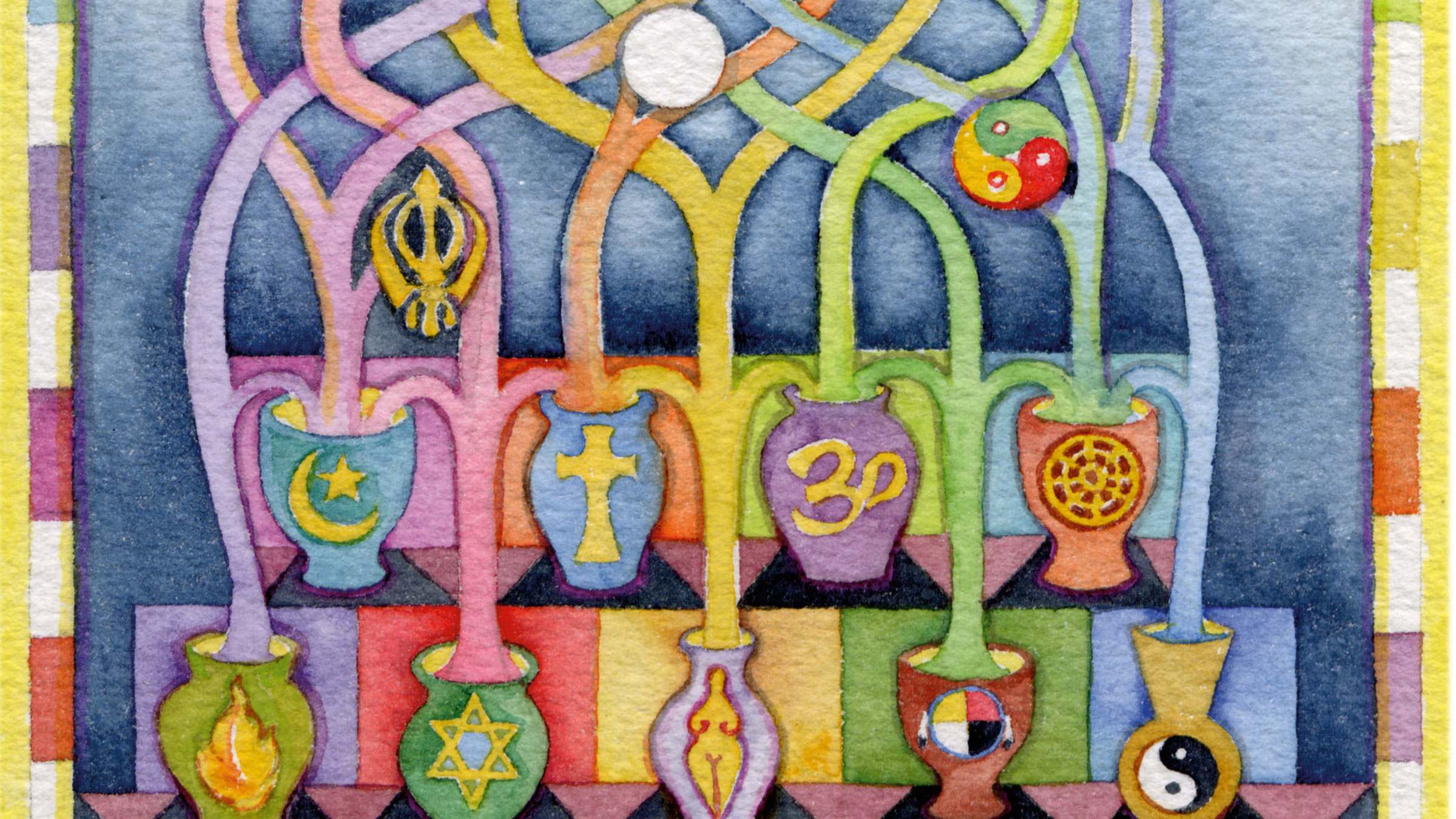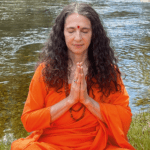Andrea Miller: Are there any rituals or practices in your tradition that you think people of all traditions could benefit from?
S. B. Rodriguez-Plate: All of them! Whenever I participate in rituals and traditions from groups I haven’t been involved with before, I learn so much. Different ways of moving, different smells, sounds—it all makes me more aware of who I am and my commitments in the world.
I teach a class called Religious Diversity in the USA, and instead of focusing on historical facts, we visit different places and communities: a Vietnamese Buddhist temple, a Bosnian mosque, and so on. If the Buddhists are doing a meditation session, we join in. At the mosque, we sit for prayer. The students don’t need to know everything about Islam or Buddhism—they just need to be there and experience it. That sensory experience is so rich. Then we return to the classroom to unpack it.
Let’s do more of this. Let’s join each other’s rituals and practices and see what we learn along the way.
Pamela Ayo Yetunde: I don’t think there is or needs to be a universal ritual. But let’s think about the particularities embedded in these traditions: care, compassion, mercy, and service. Just live that out. And then we’ll meet each other in those places. There’s a quote from Rumi: “Beyond all notions of right-doing and wrong-doing, there is a field. I’ll meet you there.” That’s where I’m coming from.
“Just showing up for each other at these critical times — it can’t be overstated how important that is.” —S.B. Rodriguez-Plate
Ben Connelly: From my own tradition—Zen—there’s the practice of drawing attention to the body, to emotions in yourself and in those around you, and to everything you hear, smell, taste, and touch, so that thought becomes a smaller part of the whole. I believe if everyone experienced that more, it would be good for everybody.
S. B. Rodriguez-Plate: Rituals get us into our bodies, and that’s an important starting place for both social justice and spirituality.
Andrea Miller: How can religions work together to address global challenges such as poverty, climate change, and inequality?
Pamela Ayo Yetunde: It’s already happening in different ways—sometimes without us realizing it. Often, we gather out of a shared understanding of an existential threat we all face, regardless of religious belief. That’s what draws us to being activated and collaborative across our differences.
Religions themselves may not act together, but people will. Maybe we should lower our expectations about some kumbaya moment of full unity. Instead, ask: “Can I be curious about those I’m already working with?”
There will always be people who won’t work on issues with us. For example, if someone believes the end of humanity is necessary for their God’s arrival, it’s hard to convince them humanity is worth saving. I’d let that go and focus on collaborating with those I can.
S. B. Rodriguez-Plate: I’m a believer in dealing with global challenges by getting involved locally. I live in Upstate New York in Utica, a small city with incredible religious diversity, and I’m on the board of our local interfaith group. In Utica there’s lead paint in a lot of old buildings, and it mostly affects poor people and people of color. Different groups have gotten together—Jews, Christians, and Muslims—to help eradicate lead poisoning in local houses and schools.
Climate change and environmental devastation are huge. So, we’re thinking about what we can do—community gardens and creating awareness of the issues. But focusing on the local—that’s where so much of it has to start.
Ben Connelly: Different worldviews, religions, ethnicities—all are wonderful. But being able to connect across differences is important for working together to produce any good result.
In a time when there are people who actively try to exploit and increase division between people across religious difference, it’s helpful to counter that with another force: coming together. I’m mostly focused on that relationship-building piece—trying to help people be in relationship. Then they can say, “Oh, we’d like to work on this challenge together.”
Sadhvi Bhagawati Saraswati: With about 76 percent of the global population subscribing to a faith, we must recognize the profound role religion plays in shaping our values, priorities, and decisions. Issues like poverty and inequality result from choices we make in how we structure society. There are enough resources to address many of our problems. For example, U.S. agriculture alone could feed 10 billion people annually, yet nearly a billion people go hungry each year. The gap isn’t from not having enough food. It’s from distribution issues, the meat industry, and food choices.
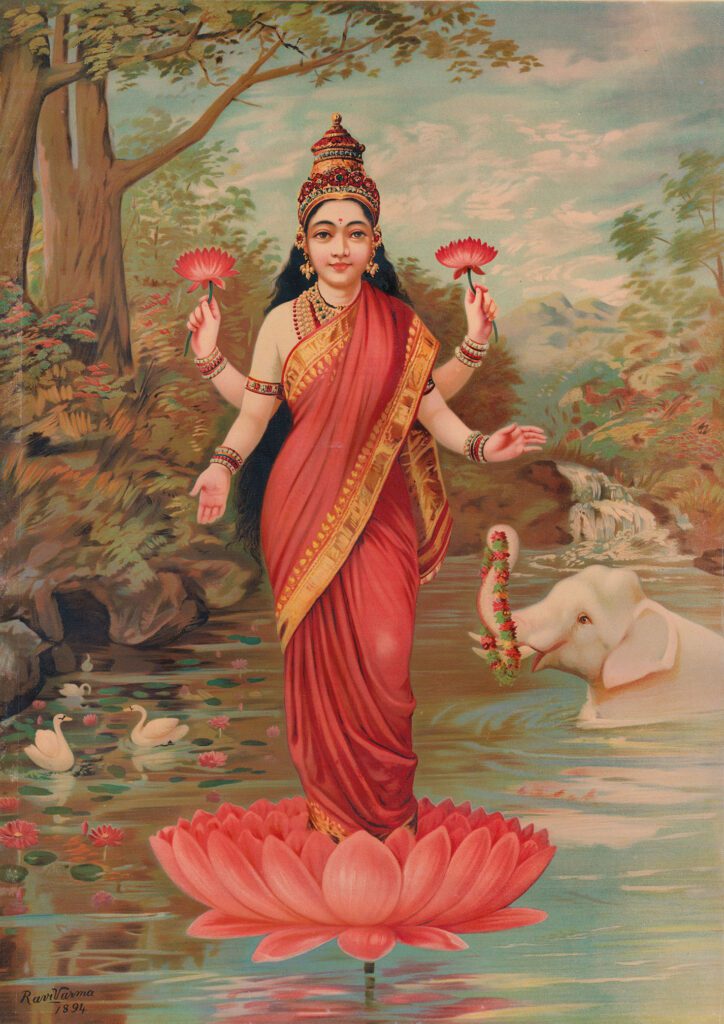
Religion is meant to inform our values, ethics, and decisions. So, if our faith seemingly gives us permission to consume the resources of other people, we do it. If, for example, we can say, “The Bible gives us dominion over the animals,” then we justify the choices we make. Or in the Hindu tradition, you’ll hear people say things like, “I guess it’s just their karma to be poor.” But that’s not accurate. Even if poverty is someone’s karma, your dharma is to serve them if you have resources.
Faith shouldn’t be about how we attain heaven after death—it should be about how we create heaven on earth. It’s not just about moksha, nirvana, or liberation. It’s about using this very body—your talents, skills, and opportunities—to serve others now.
Andrea Miller: What do you see as the most significant challenges facing interfaith dialogue today?
S. B. Rodriguez-Plate: The word “dialogue” might be part of the problem. It comes back to this idea that we should talk about these things. There’s still this idea of “let’s get a priest, an imam, and a rabbi on stage and ask them questions about their theologies.” Trying to figure out if we believe in the same God or not is a hindrance to what we can actually do.
We need to be about action, creative expressions, having dinners together, and creating activities where we’re focused on particular issues rather than talking about it all. Obviously, we’re talking here today, and talking is important. But getting beyond interfaith dialogue toward something more bodily and aesthetically based are ways to move in new directions with interfaith, interreligious work.
Pamela Ayo Yetunde: A significant barrier is holding tightly to a sense of religious supremacy. It’s thinking that what I believe is the best. It’s the most merciful, the most representative of the divine, and I will hold on to that with dear life in the face of others who don’t believe it.
Ben Connelly: Significant challenges I see are major global conflicts. Sometimes in multifaith work, it’s hard to build relationships and stay in coalition, because there’s conflict between Hindu people and Muslim people, or Jewish people and Muslim people, or conservative Christians and a lot of other religious groups. These are longstanding conflicts of power related to religious belief, so people of a certain religious belief are more likely to be on one side.
The conflicts have profoundly affected people. There’s real trauma that people hold in their bodies and minds. When we come together, some aspect of what we’re talking about can bring that up, and then it’s easy for there to be division. My multifaith work has often been trying to help people come together even though there’s all this anguish, anger, and differing opinions about matters that impact them, their families, and their communities.
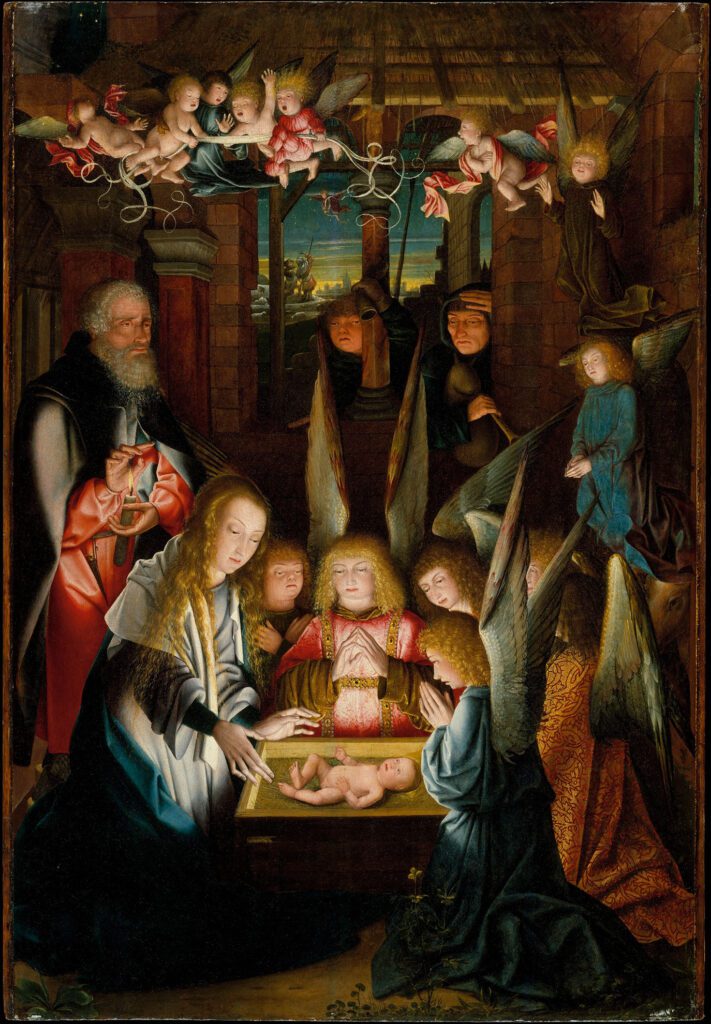
I didn’t name all of the religious conflicts of which Buddhists have been a part, because they’ve come up less in my work, but they’ve come up. I recall going to a mosque to speak at a fundraiser for Muslim Rohingya who were facing ethnic cleansing in Myanmar, a majority Buddhist country. My work was to say, “I acknowledge this is happening. Buddhists are doing this. Buddhists are also resisting it. I’m here to try and foster relationship.”
Sadhvi Bhagawati Saraswati: In so many cases, religion—and even God—have been coopted for certain individuals’ desire for more power, more money, more resources. It’s challenging to convince people to “Be prepared to give up your life, so that I can be king or president or prime minister of more land.” But if I say, “Those people who have the land, power, or resources are against God, and God is commanding you to liberate the land, the resources, the power and to give it to us, who are God’s people,” then it’s easier to get people prepared to fight for it.
The conflicts aren’t over how we pray. They’re over power and resources. What you end up with is religion being coopted for things that have nothing to do with religion.
“Learning about other religions can be powerful — not just to enrich our own faith, but to enrich our humanity and compassion.” —Sadhvi Bhagawati Saraswati
Andrea Miller: How has engaging with another spiritual tradition affected you?
Pamela Ayo Yetunde: Before becoming a chaplain, I was a hospice volunteer at Zen Hospice Project, now called Zen Caregiving Project. There was a person there who was Muslim, and he asked for someone to read the Quran to him. I’d never read it before. I began reading aloud from left to right, not realizing I was reading it backward. We laughed about it, but I committed myself to being more aware of interreligious contact, preparation, appreciation, and service. Rather than saying, “I’m not Muslim, I shouldn’t do this,” all I wanted to do was meet the need.
Here is a ritual I’d like there to be in all of our traditions: the ritual of letting go of the supremacy embedded in these traditions. If that was a ritual, I’d say, yes, we all need to let go of supremacist thought.
Ben Connelly: Even within my own tradition of Soto Zen, every temple has its own way of doing things. Being in those differences, even within the same tradition, is transformative. Another experience was traveling to Vietnam and practicing with Vietnamese Zen folks in the Truc Lam tradition. Truc Lam has all these commonalities with Soto Zen, but also deep differences. Soto Zen is very organized and balletic in its rituals. In Truc Lam, people move more independently during services. I thought I knew “This is how it is with Zen,” but then I saw, no, that’s just how it happens to be for a little while at one place that I go.
S. B. Rodriguez-Plate: I grew up in an evangelical Protestant household where the Bible was the center of everything and where we read it silently to ourselves. Later, what I learned from Islam is that recitation is key—that you hear the Quran, that you feel it in your body. It wasn’t this modernist, individualist sense of “I’m by myself, reading my Bible and becoming close to God because of this.” Reading the Quran is embodied and communal. This sent me off in a different direction in both my academic work and my personal understanding of everything.
Sadhvi Bhagawati Saraswati: Learning about other religions can be powerful—not just to enrich our own faith, but to enrich our humanity and compassion. I remember a program we had here at Parmarth Niketan Ashram a couple of years ago where young Hindu and Muslim students lived, learned, and shared space together.
It was interesting watching them, because they’d say things to each other like, “You like ice cream and cricket? I like those things too!” These simple discoveries changed how they saw each other. They’d grown up with the idea that the other was completely different—us and them. But being together helped break down that illusion. We humans have a deep fear of the unknown. Sometimes, simply knowing can lead to vast change in how we operate.
The program laid a powerful groundwork for lives of compassion, understanding, and inclusiveness. I get tears in my eyes thinking about the role these youth will play when they’re adults in the community. When there’s prejudice, they can now come forward as leaders and say, “Hey, that’s not actually true. I have evidence to the contrary.”
So, that’s with regard to our basic humanity, but engaging with other traditions also deepens us in our own spiritual faith by reminding us what we love about it. It’s like spending time with somebody else’s family. As you learn about them and love them, it also makes you appreciate your own family more.
Andrea Miller: What’s a common misconception about your spiritual tradition—or a tradition you were once part of—that interfaith dialogue could help dispel?
Sadhvi Bhagawati Saraswati: One misconception is that Hinduism is polytheistic. It’s not. We believe in one infinite, supreme reality that can be worshipped in countless forms—but it’s all one reality. It’s not even traditional monotheism. We believe there’s nothing but God.
Judaism is a religion I was raised with. A myth I can think of is the idea that Judaism and the political decisions made by the Government of Israel are one and the same. The fact is the Jewish religion and people subscribing to the Jewish religion are no more complicit in, or responsible for, decisions made by the Government of Israel than global Christians would be for decisions made by President Trump in America. It’s important that myth be dispelled.
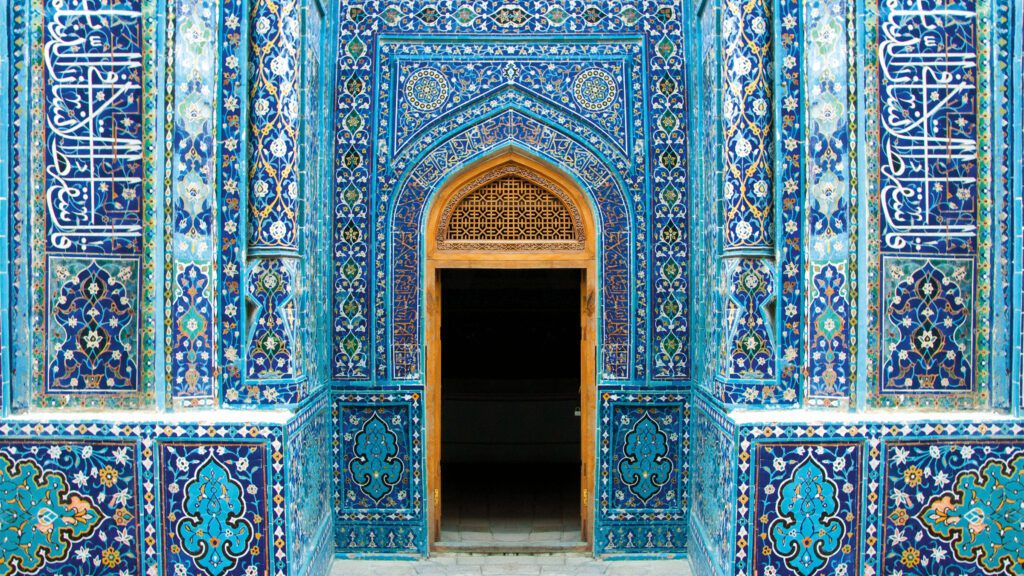
S. B. Rodriguez-Plate: There are many ways misconceptions arise. Some of it is fueled by media portrayals—shallow headlines and narratives that flatten out the complexity. And honestly, some of it is self-inflicted harm. Religious groups themselves sometimes project an image that’s not nuanced, kind, or reflective of the best in their traditions.
In evangelicalism as it currently exists, there’s the Christian nationalist impulse and weaponization of belief. So, it would be easy to say, “I used to be evangelical, but I’m not now because they’re just bigots and hypocrites.” Yet I keep meeting theologically conservative evangelicals who are deeply relational, spiritual—and progressive. They’re working for LGBTQ rights, supporting the unhoused, doing real justice work. This challenges the story I might tell of my origins.
News and polls matter, but they miss individual stories. I try to hold space for that. Even the MAGA people are reacting to something—some emotional trigger. So, I ask: What’s their story? What can we learn from it? How can we step into the body and mind of someone who doesn’t agree with us?
Ben Connelly: There’re a lot of people unaware of the large numbers of Buddhists who are Asian-American practicing in the United States. Some people have this idea of Buddhism that’s how predominantly white converts have understood it and projected it in the last fifty years.
Some people claim Buddhism isn’t a real religion. The idea that Buddhism is divorced from belief systems, that it’s completely rational, that it’s a science—there are bases for these views, but they’re misconceptions in that they’re not the whole story. Buddhism is an incredibly diverse tradition.
Also, some people expect Buddhists to be totally peaceful. I’m practicing because I would like to be peaceful.
Pamela Ayo Yetunde: People fail to understand the psychology of these traditions—the psychology that supports resilience. Religious traditions are trying to help us abide with the existential situation that we’re in. So, without that psychological lens, people don’t understand the impact that the religious practices have on the adherents.
One of the stories that I love, that I think is so often misunderstood, is from the Bible: Jesus’s encounter with the Canaanite woman who wants him to heal her child. He comes from a monotheistic tradition, whereas hers is polytheistic. So, Jesus ignores her at first, says he’s not there for her people. He says, “I am here for my people.” And the disciples back him up: “Yeah, we’re here for our people, not for you.” Then Jesus goes further, likening her people to dogs. And she comes back at him saying, “Well, don’t the dogs eat scraps from the master’s table?” I love this story because it’s a story of an instrumental figure of world history—who some see as God or the Son of God—who is mean to someone outside of his group. But she puts him in a situation where he goes from denigrating her and her people to listening to her and offering everything she wants beyond her initial request. It’s these transitions from hatefulness to compassion and loving-kindness that I would like people to see.
Andrea Miller: Are there shared spiritual goals that unite people of different traditions?
S. B. Rodriguez-Plate: I tend to shy away from ideas of “shared” and “in common.” They can get us off on the wrong foot for interreligious work. There are probably some spiritual goals that unite people, but I think I’d rather show up in a room full of Muslims, Buddhists, Christians, Jews, Hindus, and Indigenous folks and ask, “What are your goals?” and see what comes up.
When a stranger asks me what I do, inevitably the response is, “Well, I think all religions are the same. They all want the same thing.” That’s a problematic way to think about these thousands and thousands of years and millions and billions of people in these traditions. I tend to emphasize difference not to make wedges between groups but to say, “How can you be you, and we be we, and all of us can come together and think about some of those differences?”
One of my friends is a Reform rabbi who is part of our local interfaith group. He always says, “When there’s a Jew in the room, you Christians feel like you can’t talk about Jesus.” He’s like, “Talk about Jesus! That doesn’t offend me. I understand who you are.”
I love that we’re different. Our goals and ultimately our ethics are different. What does it mean to be a good person? That means something different in this tradition than that tradition.
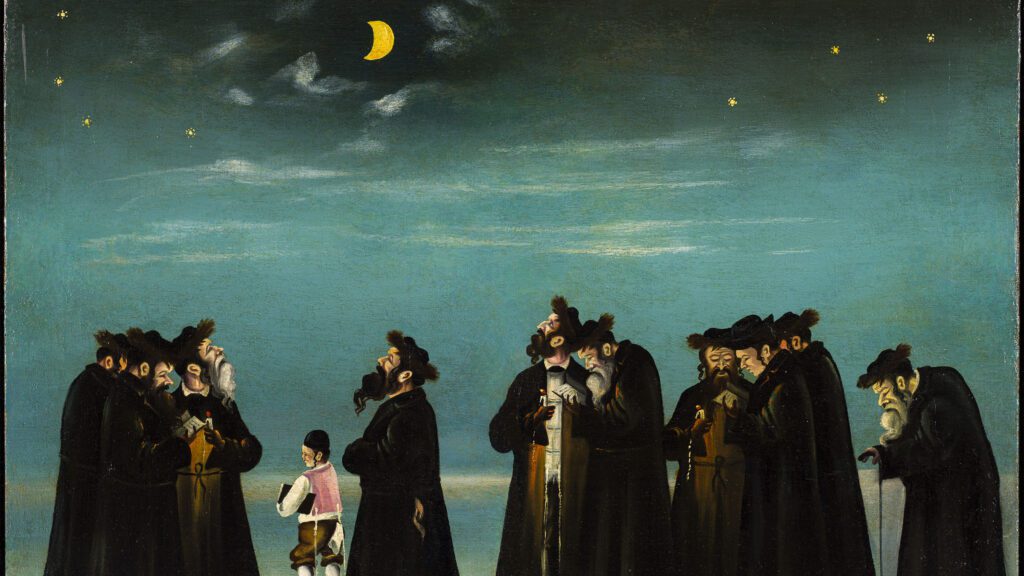
Pamela Ayo Yetunde: There are similarities in motivation and aspiration that can unite us. But ironically, those very similarities are sometimes what cause conflict. We’re all trying to answer the same existential questions: How do I live in this world? How do I deal with death? How do I find meaning and hope? But the ways we answer these questions can clash—like, “Your path won’t get you there. My path will!” That’s when the fighting starts.
So, the existential questions themselves are shared across traditions. Yet the paths we create to answer them can be very different. That’s okay, even if it’s also hard.
“It’s really about choosing which elements of difference and sameness we want to emphasize and play with together.” —Ben Connelly
Ben Connelly: Recently, I signed a clergy letter in Minnesota with hundreds of faith leaders supporting immigrant protections. It began, “All the undersigned, from all our religious traditions, believe in compassion, caring for others, and taking care of people who have fewer resources or are oppressed.” I thought, “Those are Buddhist values too.” We focused on shared values while also listing our different faith identities. It’s really about choosing which elements of difference and sameness we want to emphasize and play with together.
Andrea Miller: What are effective ways for interfaith leaders to foster unity and healing in polarized societies?
Ben Connelly: Seeing Muslims, Jews, Christians, Buddhists, and folks of other beliefs together—it has an impact. There are people putting out messages that these groups have intractable differences, or that certain communities, like Muslims or Jewish people, are bad or dangerous. There’s vilification and active attempts to divide people. So, just physically saying, “We are here together” matters.
Another thing you can do is look like you care—and that happens by actually caring. I like to build relationships with multifaith leaders so that when we show up in public, we love each other, and you can tell. That really matters. Then you can sit down and write your statement, or do your series of prayers on a particular subject, or make sandwiches for people—all those wonderful things. It’s about modeling.
S. B. Rodriguez-Plate: One of the more powerful interreligious events that I’ve been part of over the past few years was near Utica maybe seven years ago. There was the shooting in a mosque in Christchurch, New Zealand, and the shooting at the synagogue in Pittsburgh—both within a year’s time.
After the Pittsburgh shooting, our local Reform synagogue had a memorial service. A contingent from the local Bosnian mosque went and joined them. The imam was there and said a prayer in Arabic. Then a few months later, after the Christchurch shooting, a contingent from the Jewish Reform synagogue showed up at the mosque for their memorial. It was moving for so many of us to be together.
Just showing up for each other at these critical times—it can’t be overstated how important that is.
Pamela Ayo Yetunde: Dialogue is usually between two, and polarization is usually two. It’s really important to have more than two engaged in this work. We can see, living in the U.S., the problem with having a two-party system. The very existence of opposing poles in competition with each other causes them to become even more polarized. So, for what we’re trying to do—collaborate across our differences—we need to be engaged with more than two. Maybe three, four, five, six. I don’t know what the ideal number is, but there should be a sweet spot where everyone engaged in the work realizes that they have to practice humility about their beliefs in order to create and maintain space for everybody else. If we don’t do that, then we engage in less-than-helpful dialogue that’s only producing more conversation back and forth. It needs to be multidirectional and informed by different perspectives.
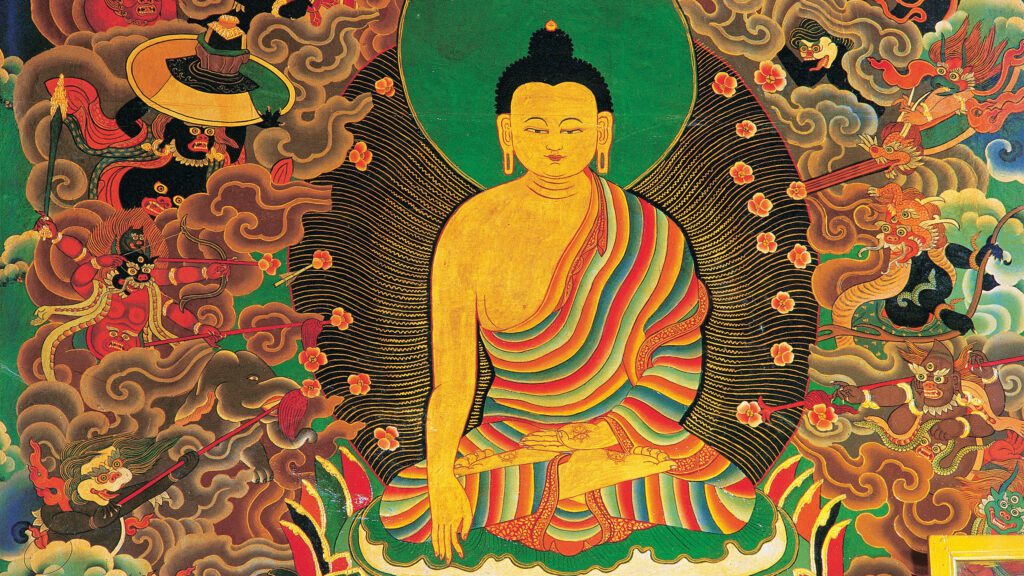
Sadhvi Bhagawati Saraswati: If you look at how violence in the name of religion has occurred throughout history, like what Hitler did with the Jews, it always happens because we’ve turned the other into a caricature. And it’s not just in religion. Look at America’s history of slavery. That deliberate dehumanization justified harm. Yet when we come together, we see: Your skin might be a different color, or you might call God by a different name—but you’re just like me. And once we recognize that, it becomes much harder to do harm.
This is the commitment of the Global Interfaith WASH Alliance. WASH stands for water, sanitation, and hygiene, but our work has a dual aim. The first is the actual campaign goal itself, such as ending menstruation taboos. But there’s a whole other, equally important aim running parallel to that one: to show people of all religions that their leaders are standing together.
When people see their imams, swamis, priests, or spiritual leaders on stage with leaders of other faiths—when they see them working together—something shifts. That image suggests: “If my imam or swami or priest is holding hands with that other guy, then maybe we’re not enemies.”
This is why we’ve come together for so many programs—like tree plantings and trash cleanups—because these issues affect everyone. Diarrhea doesn’t discriminate. Cholera doesn’t discriminate. Bad water doesn’t discriminate. Thirst doesn’t discriminate.
As we bring religious leaders together—not just in name, but in real, physical service—communities also come together. They’re planting trees and cleaning rivers, side by side. And in doing that, we give them a shared enemy: poverty, inequality, climate change, deforestation, bad water, and disease. Once we’re fighting together, we realize: “Oh, we’re on the same side. We’re allies.” That changes everything.
